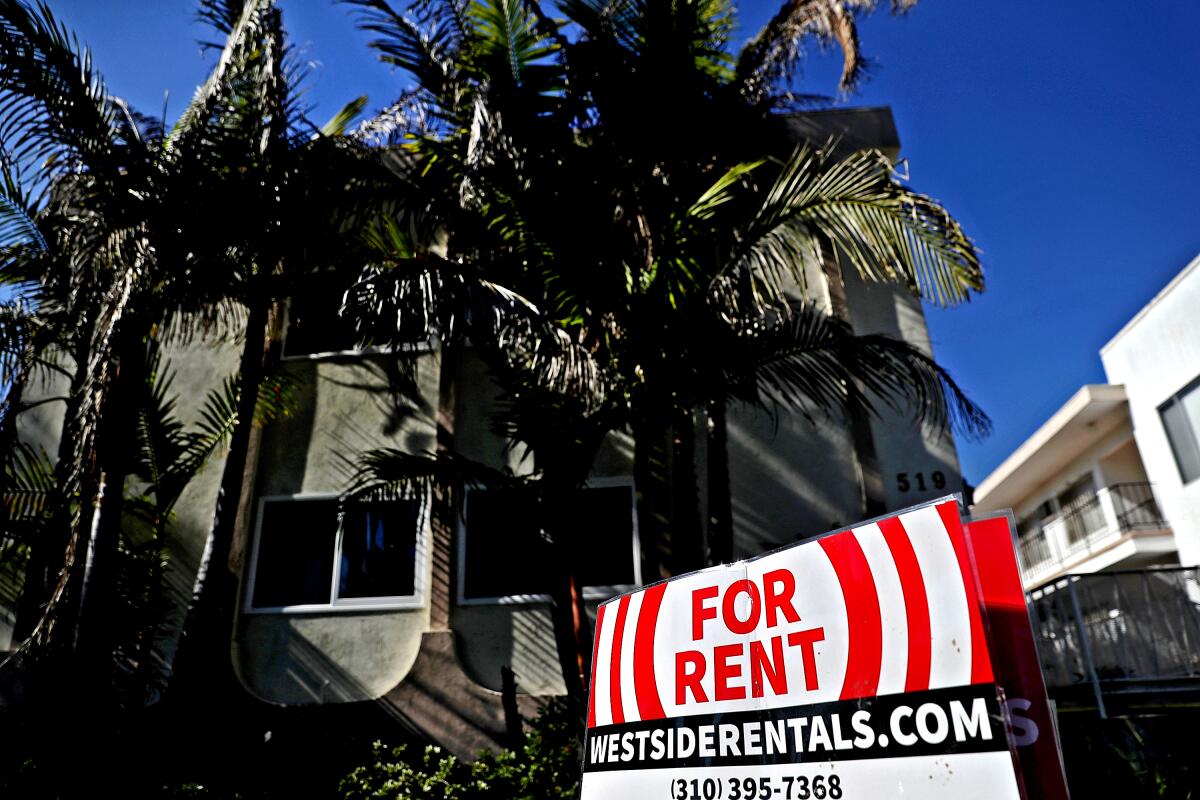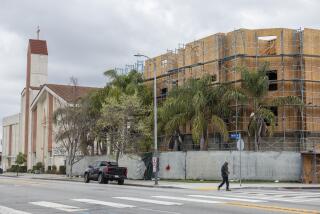A new limit on rent increases takes effect today. What to expect

On Thursday, some L.A. County tenants may wake up to a 30-day notice of a rent hike from their landlord. Other renters may have known about an increase since July. The silver lining is that, for many Californians, the amount of the increase is limited by law.
The statewide Tenant Protection Act, passed in 2019, places a limit on how much landlords and property managers can raise the rent annually.
For the record:
10:12 a.m. Aug. 1, 2024Correction: An earlier version of this story said the 8.9% cap is for all of L.A. County; it is not.
Here’s a closer look at how the law works and what you can expect.
How much can rent be increased?
As of Aug. 1, the rent cap is 8.9% for L.A. County residents not covered by more restrictive local rules, according to the Department of Consumer and Business Affairs. That’s a slight increase over last year’s limit of 8.8%.
Each year, under the law, a calculation is made that takes inflation into account. Rent can be increased 5% plus the change in the local cost of living.
The U.S. Bureau of Labor Statistics’ consumer price index in April for the Los Angeles area was 3.9% — add 5% to that and you have this year’s limit of 8.9% for the county of Los Angeles. It will remain in effect until Aug. 1, 2025.
According to the Tenant Protection Act, the total increase for the year cannot top 10%. Inflation has eased somewhat since 2022, when every region in the state met the requirement for the cap to be set at the maximum 10%.
Who is affected?
The law applies to most residential rentals in California excluding housing that was built within the last 15 years. Tenants in newer buildings may be subject to higher increases by their landlords.
Some cities in California — including Los Angeles — have their own local rent control laws that further limit annual rent increases. The county notes that those local regulations take precedence.
The city of L.A.’s rent control restrictions, called the Rent Stabilization Ordinance, cover properties built on or before Oct. 1, 1978; units built after July 15, 2007, that replaced demolished rental units built on or before Oct. 1, 1978, also may be covered.
The rental can be an apartment, condominium, townhome, duplex, ADU or a single-family home if there are two or more on the same lot.
Renters who live in unincorporated areas of L.A. County in buildings with two or more dwelling units are covered by the county’s temporary 4% cap on rent increases through Dec. 31.
You can find out if your property is covered by the city of Los Angeles’ Rent Stabilization Ordinance online by entering your address.
Other Los Angeles County residents can contact their local City Hall to find out if there are any rent control restrictions in place for their city.
Stay Housed L.A., a coalition of legal aid organizations, also has a short list of 13 cities within Los Angeles County and their unique rent increase protections. The coalition can also offer guidance on how these rent increase rules apply to your rental.
More to Read
Sign up for Essential California
The most important California stories and recommendations in your inbox every morning.
You may occasionally receive promotional content from the Los Angeles Times.











